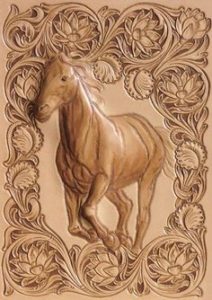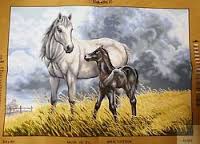Writing setting in Fantasy Fiction
For fantasy fans, setting is of particular importance. Two weeks ago, I wrote a post about why setting matters. Setting matters in all fiction, but is especially important in fantasy literature. While plot is, of course, important and nothing can replace well developed characters, fantasy fans choose the genre largely because of the setting. They like the magic. They want to escape the banality of their lives and escape to new and innovative worlds. Give them that world, or they leave and not come back. Lacking adequate description was once a weakness in my writing that I have worked hard to fix, so I want to share what I have learned and, hopefully, save you some time.
Writer’s Digest has a great post about Basic Elements of Setting that I highly recommend. In this post, I’m going to cover a specific technique of description that I call Big Picture/Specific Detail.
Big Picture
To feel oriented, the reader needs to see the big picture of the setting you are describing. When a character first enters a space, you should give a general description of what is there. As an example, see the description from The Goddess’s Choice of the princess’s room:

Carvings may have looked something like this
The princess gestured toward the huge portrait of the Princess Danu that covered one wall of her bedchamber. The long-dead princess was laughing as she galloped across the fields with her auburn hair flying out behind her in the wind. The stars on the forehead and chest of her horse shone against its gorgeous coat. Samantha loved this painting, which was just as well because it was bolted to the wall and couldn’t be removed without tearing her chambers apart. She’d decorated the rest of her bedroom to match. Tapestries of horses covered the walls. Her dressing table, armoire, and large four-poster bed had horses carved into the woodwork. A quilt, embroidered with horses and stars, was spread over the bed. The mantle over her fireplace sported figurines of horses in gold, silver, jade, crystal, and precious stones. Every new ambassador added to her collection.
Here we get the big picture of Samantha’s room, which is decorated all in a horse motif. This both orients the reader to the space and also gives the reader insight into Samantha’s character. She loves horses.
We see a similar big picture technique when Robrek, the peasant sorcerer, first enters the space in the first chapter of The Soul Stone. It also demonstrates how setting can reveal character. Although it is the same room, he describes it much differently.

A horse like this perhaps
For the first time, he looked around her room. One entire wall was covered by a painting of a princess, resembling Samantha, riding a Horsetad. Besides the painting, the room held two huge wardrobes, carved with horses and stars in intricate detail. He opened them and found them full to bursting with dresses in silk and satin, lace and velvet, so many she could wear a different one every day for an entire year. Robrek shook his head. Although his father had been considered wealthy by those in the Valley, Robrek had never had more than a couple changes of clothes. Figurines of horses in gold, silver, jade, crystal, and precious stones arrayed themselves on the mantle. Ten years’ proceeds from his father’s crops couldn’t have afforded one of them.
Readers need to see the big picture so that they feel as at home (or not) as the character does.
Specific Detail
The big picture orients the reader, but it is the specific detail that intrigues. You never want to give a catalog of everything that is in a room or even on a dresser, but picking out a few specific details to describe more thoroughly will make your setting come alive. In the first scene described above, Samantha later describes two specific items:

Not quite the same, but gives the idea
Samantha picked up her silver-backed brush from the dressing table, a gift from the Neaserian ambassador that was inlaid with an amber Horsetad; diamonds marked the stars at its forehead and chest.
Pausing in front of her favorite tapestry—a white mare at the edge of the forest, helping her newborn foal stand, she wished she were heading for the stables instead of the ballroom.
In the second scene, Robrek makes note of the same tapestry and one other specific detail.
A life-sized horse made of smoked crystal dominated one corner. It had a gold mane, tail, and hooves and wore a gold saddle studded with emeralds. On the wall was a huge tapestry of a white mare at the edge of the forest, helping her newborn foal stand. The mare reminded him of Roberta, the horse he’d helped Samantha choose at the horse fair where they first met.
The specific details make the setting real and vivid. In describing setting, make sure give your readers both the big picture and the specific details.
What are your thoughts about setting? What authors do you think do it well? Comment below.
